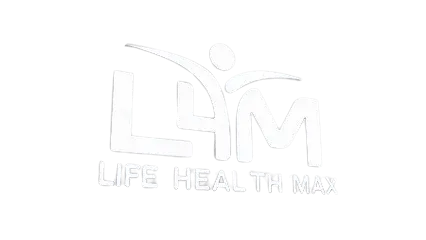Navigating the world of medical billing and coding can be tricky, especially if you’re new to the field. Mastering these skills is crucial for ensuring the financial health of a healthcare practice. Focusing on accuracy and efficiency in medical billing and coding can significantly enhance your practice’s revenue cycle. Understanding key practices and adapting them effectively can help reduce errors and delays, keeping your operations smooth.
Efficiency in coding is essential not only for maintaining compliance but also for optimizing financial outcomes. By adopting streamlined processes, you can avoid common pitfalls that lead to claim rejections and increased administrative burdens. Methods like verifying patient benefits upfront and paying attention to adjusted collection rates can make a significant difference.
When done right, medical billing and coding become more than just an administrative task—they are essential parts of a successful healthcare practice. Prioritizing best practices will ensure that you maintain compliance with legal standards, maximize revenue, and provide better patient care. Explore helpful tips and tricks to stay ahead in this critical area.

Key Takeaways
- Accuracy boosts revenue and reduces claim issues.
- Efficient processes streamline billing operations.
- Proper billing practices ensure compliance and success.
Understanding the Basics of Medical Billing and Coding
Medical billing and coding involves converting healthcare services into standardized codes. These codes are crucial for billing and claiming insurance.
Types of Codes:
- ICD Codes: Used for documenting diagnoses.
- CPT Codes: Cover procedures performed.
- HCPCS Codes: Include various services and equipment.
Accurate coding helps prevent claim denials, lets you get paid quickly, and ensures that records are correct.
Why is it important? Insurance processing relies heavily on accurate codes. Understanding this process is crucial for a smooth billing experience. Proper coding can avoid costly mistakes and ensure compliance with healthcare regulations.
Regular updates in coding standards mean you need to stay current. This helps maintain accuracy and efficiency in processing claims.
For a successful career in medical coding and billing, focusing on detail and precision is important. This not only helps minimize errors but also ensures quicker processing. If you seek to improve or start in this field, resources like The Basics of Medical Coding and Medical Coding and Billing Guide are great places to start. Use these resources to build a strong foundation in the essentials of this discipline.
Efficient Coding Practices
Improving medical billing and coding involves selecting precise codes and staying updated with code changes. It helps you to minimize errors and ensure correct reimbursements.
Accurate Code Selection
To ensure accurate code selection, understanding coding systems like ICD-10-CM and CPT is crucial. Each code represents specific medical conditions and procedures, so choose the most appropriate one to describe services fully. Regular practice and use of coding software can speed up this process. A decision tree or flowchart can guide through complex cases.
Code audits help spot frequent mistakes. Reviewing denied claims provides insights into common errors, allowing you to adjust methods accordingly. This ensures that reimbursements align with the care provided, reducing financial discrepancies.
Staying Current with Code Updates
Medical codes frequently change to reflect new medical knowledge and treatments. Staying current with code updates is essential for maintaining accuracy. Regular training sessions and workshops can keep you informed about these updates. Subscribing to relevant newsletters and industry publications can also provide the latest information.
Using updated coding software that includes recent changes helps incorporate new codes seamlessly into practice. Online databases and coding networks can also serve as valuable resources for tracking changes. Prioritizing continuous learning keeps coding skills aligned with industry standards, reducing the risk of errors and denials.
By following these practices, your billing accuracy will improve, and you will enhance your organization’s overall financial health.
Streamlining the Billing Process
Streamlining your billing process can greatly improve efficiency, reduce errors, and enhance revenue cycle management. By utilizing specialized billing software and conducting regular audits of claims, you can boost accuracy and speed.
Utilizing Billing Software
Investing in billing software can make a significant difference in your billing process. These tools help automate administrative tasks, allowing you to focus on other important aspects of your practice. Automated software reduces manual input, minimizing errors and freeing up your team’s time. Modern software often includes features like patient reminders, which can be sent via text, to help reduce late payments.
Choose a software that integrates easily with your existing systems. Compatibility ensures that patient information moves smoothly across platforms without data loss. Look for software that offers seamless updates to keep up with regulations and technology changes. Adaptability helps your practice stay current and efficient. It’s vital to provide training for staff on new systems to ensure everyone is comfortable and proficient with the tools in use.
Regularly Auditing Claims
Regular audits of your medical claims can catch and correct issues before they become bigger problems. Conducting audits helps spot patterns in errors and corrects them with targeted training for your staff. Certified coders can review claims closely to confirm their accuracy, reducing the chance of rejected claims.
Creating a schedule for routine audits keeps your billing in check. Set clear guidelines for what your audit should cover, focusing on areas like coding errors and missing information. Such audits improve the reliability of your billing practices and help maintain a consistent revenue stream. Proactive audits can also uncover unconventional trends in claims, prompting necessary adjustments to your billing process.
Optimizing Revenue Cycle Management
Improving revenue cycle management (RCM) involves addressing key processes like preventing claim denials and enhancing payment collections. By focusing on these areas, healthcare providers can increase efficiency and maintain a steady cash flow.
Preventing Denials with Pre-Authorization
Obtaining pre-authorization is crucial in reducing claim denials. You need to check with insurance providers to confirm coverage before services are provided. This step ensures that the services fall under the patient’s insurance plan and prevents unexpected denials.
Having a checklist for required documentation can be helpful. Make sure you collect all necessary patient information, such as personal identification and detailed medical history. Employing a dedicated team or software to handle pre-authorization processes can streamline these tasks and minimize errors.
Regularly training your staff on insurance requirements is important. Staying updated with insurance policies helps in understanding any changes that could affect pre-authorization. This proactive approach can prevent costly delays and denials, ultimately enhancing your revenue cycle management.
Enhancing Payment Collection Procedures
Effective payment collection is vital to maintaining financial stability. Start by ensuring that billing information is accurate and up to date. This includes verifying addresses and contact information, as incorrect data can lead to delays in payments.
Offering multiple payment options can improve patient satisfaction and increase collection rates. Consider accepting credit cards, online payments, and installment plans to accommodate different patient preferences.
Implementing clear communication strategies is also essential. Use polite reminders via phone, email, or text to prompt timely payments. Transparency about billing procedures, costs, and payment options can reduce confusion and foster trust between patients and your practice.
By prioritizing these procedures, you can enhance cash flow and elevate your revenue cycle management performance.
Compliance and Legal Considerations
Ensuring compliance in medical billing involves understanding legal standards and your responsibilities. Key areas include HIPAA regulations and payer contract implications.
Adhering to HIPAA Regulations
You must ensure that medical billing practices align with HIPAA (Health Insurance Portability and Accountability Act) regulations. HIPAA safeguards patient privacy and sensitive health information. Breaches can lead to severe penalties.
To stay compliant, review how patient data is stored and shared. Use encryption and password protection to secure information. Regularly train staff on confidentiality procedures to prevent data leaks. Monitor access to records and audit these as needed.
You should also have clear policies on data handling and response plans for breaches to maintain trust and compliance. HIPAA compliance is not just a requirement; it’s a part of patient care.
Understanding Payer Contract Implications
Payer contracts define the terms and reimbursements with insurance companies. Understanding these contracts is essential for your practice’s financial health.
Check for specifics like claim submission timelines and reimbursement rates. Missing deadlines or misunderstanding rates can lead to lost revenue. Also, closely review authorization requirements and procedures.
You should regularly revisit contracts for updates or changes that might affect billing. Having a clear contract management strategy helps in streamlining billing operations and reducing disputes. Understanding contracts helps ensure you receive appropriate payments for services rendered.
Frequently Asked Questions
How can one improve accuracy in medical coding to reduce claim denials?
To improve accuracy in medical coding, it’s important to stay updated with the latest coding standards, such as ICD-10. Regular training for coders and conducting audits can help in identifying common mistakes that lead to denials. Encourage a culture of continuous learning to keep skills sharp and knowledge current.
What strategies can be employed to streamline the medical billing process?
Implementing electronic billing systems can reduce errors and speed up the process. Standardizing billing procedures and automating tasks like data entry can help. Ensuring that your team communicates well and follows up on claims promptly is also crucial.
What are some effective ways to prepare patients for the billing process?
Clear communication with patients about their insurance coverage and out-of-pocket costs is essential. Providing detailed explanations of payment options and billing procedures upfront can reduce confusion. Offering resources like brochures can aid in setting expectations.
What is the most common cause of rejections in medical billing and how can it be addressed?
A common cause of claim rejections is incorrect patient information. This can be addressed by verifying all patient details before submitting claims. Encourage double-checking patient data and validating insurance information at each visit to minimize errors.
What essential knowledge should all medical billing and coding professionals possess?
Professionals should have a strong grasp of coding systems like CPT and ICD. Understanding healthcare regulations and insurance requirements is also key. Familiarity with billing software and staying informed about industry updates ensures competency.
In what ways can technology aid in the efficiency of medical billing and coding?
Technology can automate repetitive tasks, reducing human error and freeing up time for more complex tasks. Use of claims clearinghouses can streamline submissions by checking for errors before they reach insurers. Advanced software can provide analytics to help identify areas needing improvement.

Carl Clay is a health blog author who has been writing about nutrition, fitness and healthy living for over 10 years. He also loves to run, hike and bike with her wife.












